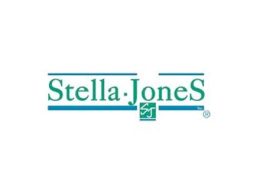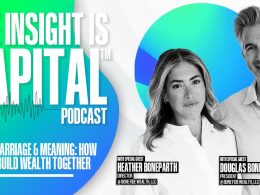If you're a Canadian investor feeling whiplashed by interest rate swings or struggling to plan around unpredictable cash flow, you’re not alone. In this kind of environment, finding a little clarity—especially in fixed income—is worth its weight in gold. That’s exactly what BMO is aiming to deliver with its new Target Canadian Corporate Bond ETFs: ZXCO (2027), ZXCP (2028), and ZXCQ (2029).
These aren’t your typical target maturity bond ETFs. BMO’s version takes a different approach—one designed to give you more certainty around how much yield you’ll actually earn by the time the ETF matures.
As the largest fixed income ETF provider in Canada, managing over $40 billion across more than 70 bond ETFs, BMO isn’t new to this space. Now they’re putting that experience to work, redesigning what target maturity ETFs can do for Canadians planning for goals like education, home buying, or retirement income.
Bringing Bonds Back to What They’re Supposed to Be
The BMO team puts it simply: “You want a bond-like experience? Ensure you get it!” That’s their way of pointing out a flaw in how traditional target maturity ETFs usually work.
Most of these funds rebalance over time and shift into cash as they approach maturity. On paper, that sounds responsible. But in practice, it can dilute returns and introduce reinvestment risk—something you don’t sign up for when you buy a bond expecting a fixed yield at a fixed date.
BMO’s new ETFs ditch that model entirely. As they explain it: “Unlike traditional target maturity ETFs, the goal of these ETFs is to not transition into cash in the year of maturity to manage performance and YTM outcome expectations.”
Instead, the funds hold a fixed basket of investment-grade Canadian corporate bonds right through to maturity. No rebalancing. No sneaky move into low-yielding cash. Just the yield you expect—delivered as promised. Or, as BMO puts it: “These ETFs hold a static portfolio and will not rebalance, providing greater yield certainty for investors upon maturity.”
Precision That Helps You Plan
What makes this setup especially useful is how closely it mirrors the way investors already use individual bonds—to match future expenses or life events. BMO notes, “Similar to holding an individual bond, investors can have the ability to match the ETFs’ maturity dates with their investment time horizons.”
With 2027, 2028, and 2029 maturities, you can mix and match based on when you’ll need the money—say, for your child’s tuition, a down payment, or a retirement cash-out.
Beyond that, these ETFs are built to reduce interest rate sensitivity over time. As the bonds inside the funds get closer to maturity, their duration naturally drops. This concept, known as declining duration, plays a big part in why BMO has labeled these funds “Low” risk.
And here’s a smart twist: to remove any final-year uncertainty, the funds “will use derivatives to lock in rates for the final year upfront”—a move that adds an extra layer of predictability you typically don’t get with other target maturity ETFs.
It’s Not Just About the Yield
While yield certainty is the headline, these ETFs also come with all the perks that make ETFs so popular:
- Diversification: Each fund includes a mix of high-quality Canadian corporate bonds from various sectors and issuers.
- Liquidity: Unlike GICs or individual bonds, these ETFs can be bought and sold anytime during market hours.
- Low Fees: With just a 0.15% management fee, more of the yield stays in your pocket. As BMO puts it, “fees can impact overall performance.”
- Cash Flow: You get quarterly distributions that may include coupon income and capital gains—potentially offering tax advantages in non-registered accounts.
- Easy Laddering: Want to spread your risk? Use all three ETFs to create a short-term bond ladder. BMO suggests this as “an option to disperse interest rate risk… by considering an investment in all 3 ETFs.”
Why This Structure Stands Out
What makes these funds different isn’t just the target maturity. It’s the combination of features that work together to deliver a truer bond experience—without the manual effort.
As BMO points out, “Competitor target maturity funds go into cash in the year of maturity which may hinder performance and outcome expectations.” That one small change—staying fully invested—combined with rate-locking and zero rebalancing, sets a new standard for how predictable a bond ETF can actually be.
It’s a rare hybrid: you get the hands-off ease of an ETF, but with the discipline and clarity of owning individual bonds.
Bottom Line: Less Guesswork, More Confidence
In a world full of financial curveballs, BMO’s latest ETFs offer something refreshingly straightforward: a reliable way to match your money to your goals—on your timeline—with a lot less guesswork.
If you’ve been holding off on fixed income because nothing felt quite “certain” enough, this might just be the clarity you’ve been looking for. Or as BMO sums it up, these funds give investors “more yield-to-maturity certainty” than anything else in their class.
Copyright © AdvisorAnalyst















